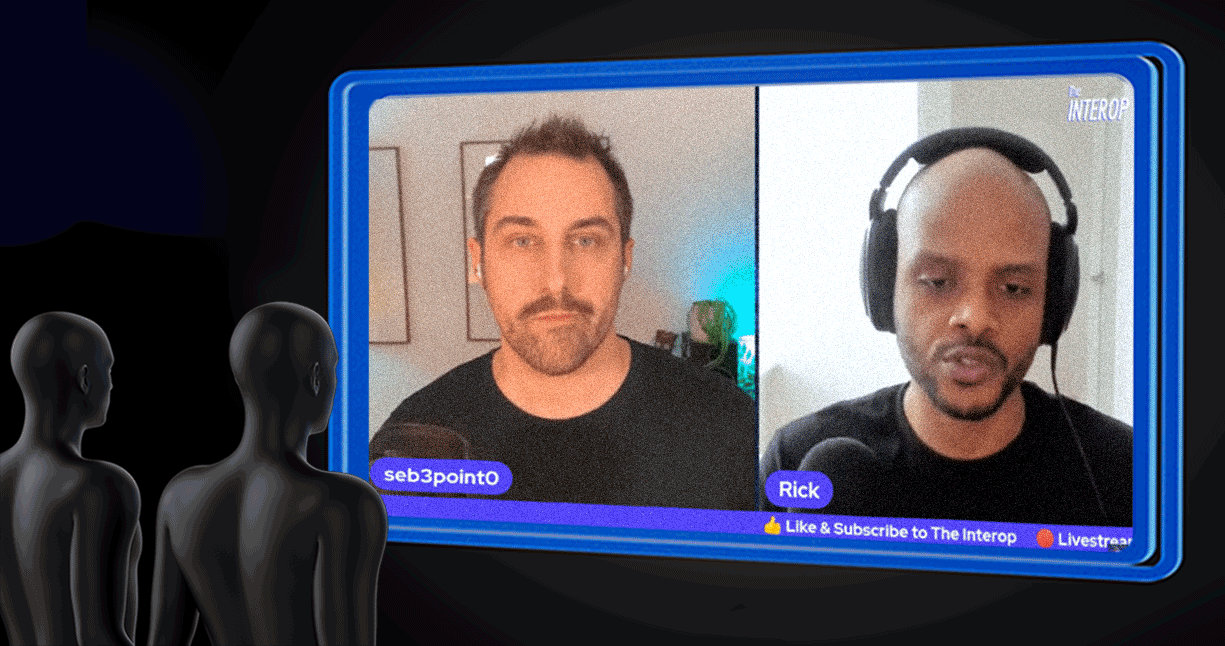Rick Dudley Discusses Laconic Network on Interchain.fm
- Insights
- Product

Rick Dudley, the co-founder of the Laconic Network, talks to Chjango Unchained on a special live-streamed episode of Interchain.FM about the risks of monopolization, why DApps have a hard time querying Ethereum data, how the Laconic Network solves this problem, and the legal aspects of creating a truly decentralized DApp data marketplace.
How Laconic preserves verifiability
Laconic is a data indexing service with an Ethereum L2 rollup that uses the Cosmos SDK and a fork of Ethermint. “Primarily, what we're doing is making third-party verifiable caches and indexes of Ethereum data, and we're building a marketplace to facilitate the buying and selling of that data.”
For Ethereum-based apps, developers only need a subset of the Ethereum state to run their DApp. Laconic connects you with service providers who can serve that data to DApps, all in a decentralized, disintermediated way.
Unlike other DApp data providers, Laconic focuses on the verifiability of the provided data. Rick points out that “there is no other platform that is preserving the verifiability in the way that we are.” Achieving this verifiability is anything but easy. If a DApp wants to run verifications using an archive node, it would take months of moderate computing time to do that, not to mention archival storage. “Most people don't have 14 terabytes just laying around that they can attach to their phone or laptop.”
Laconic’s answer is to split the data and decentralize validation. As Rick explains, “we take the whole Ethereum blockchain. And then we get a bunch of validators together and make you a little mini proof-of-stake blockchain of just the information you care about.” Ethereum remains the L1 in this scenario; “all the value that's transacted on the Laconic Network is actually staked or escrowed on Ethereum.”
Leveraging linked data
The Laconic solution builds upon an established data format (IPLD, or Interplanetary Linked Data) to deliver the promise of verifiable data. The IPLD format not only allows transforming data to better serve the needs of DApps, but also makes it possible to verify these transformations. “It's not magic, but it makes it easier for us to deal with these very complex and robust data types. It also allows us to do cross-chain proofs, which is the main appeal.”
Not only cross-chain proofs, but proofs about Ethereum events—which is not possible in Ethereum directly.
“Events were never intended to be provable there. They weren't supposed to be used in the way they're used today.” Rick explains how difficult it is for the average DApp developer to know that a single event really came from Ethereum, “You have to have the hundreds or thousands of events that came with that event, or you have to rerun the transaction in the block and see that it emitted the event. And both of those things are extremely expensive.”
Laconic has a technique for saving the effort of doing that re-computation, and IPLD plays a large part in that.
Acting lawfully
The Laconic Network will have up to 67 validators that will be located in different countries. This raises some legal questions. Chjango points to a scenario where sanctions against countries can break the promise of decentralization. Rick explains how Laconic’s legal structure addresses this issue. Laconic is run by an LLC that is designed to “comply with the laws within its jurisdiction and to allow each member to comply with the laws within their jurisdiction.”
If a country imposes sanctions on another country, the members are free to follow their local law and refuse service to members of the sanctioned countries. At the same time, the rest of the Laconic Network remains available for those accounts. All this can be done without sacrificing privacy.
“You can use encryption and other things for someone to say ‘is this user in the United States, yes or no,’ without revealing where the user actually is.” Rick concludes that, “of the 67 members, we hope to have members that are willing to and legally able to service customers in those jurisdictions that are currently underserved.”
Blockchain decentralization, or the lack thereof
Decentralization in conjunction with global distribution is key to providing uninterrupted service in the face of ill-intended governments or political disturbance. Rick considers decentralization to be retreating, giving way to new monopolies. In other words, there is a re-centralizing effect.
The problem starts with the cost of verification. Chjango asserts that “the difficulty of fully verifying an Ethereum blockchain is such that it has hurt its decentralization, even though the underlying blockchain is decentralized.” The expense of running a fully validating node has introduced new centralization choke points.
Rick places the problem one level down, at the network. The internet comprises 60,000 sub-networks that communicate over the Border Gate Protocol (BCP). But a traffic analysis found Ethereum network traffic on only 18 subnets. And a handful of companies – AWS, Google, Microsoft, Cloudflare – run much of the infrastructure, and are also in the same legal jurisdiction. So a single company can switch off large parts of the Ethereum system.
This lack of decentralization continues at the blockchain level. “There are 4000 validating nodes on the network, but about 80% of them are in AWS. And somehow, in spite of that, 50% of the blocks still come from three people.”
Laconic's answer to this problem is “forced decentralization.” Rick stated, ”Laconic requires its members to run their own hardware and to be located in different data centers. And we may at some point require people to run their own networks on the internet, so that we do maintain decentralization at that level.” Here, the legal side plays an important role. The LLC can positively assert that a Member is a specific legally registered entity. They signed a contract that stipulates they avoid being in the same data center as another Member, or else they're in breach of the contract and they risk being removed from the network. "That's a big benefit of the LLC, and definitely something that we've spent time thinking about to design it right," Rick continued.
Monopolistic forces are unavoidable. Give people an option to exit a toxic monopoly
Even with Laconic’s solution, scalability and sustainability of the whole blockchain ecosystem are not a given. As pointed out earlier, more than 50% of Ethereum blocks are created by only three mining pools.
(Source: Etherscan.io)
Such monopolization tendencies are hard to fight. Rick’s view is to initially accept the inevitable. “I think it's more about acknowledging that these things are going to be monopolized. And then building technology that allows us to exit those monopolies as needed, more than trying to build technology that's going to resist the monopoly.”
The aim of Laconic is to make it trivial for people to exit when those systems get monopolized. To achieve this, Laconic has a few layers of protection in place to stop the Laconic Network from being compromised by monopolization attempts. As an example, the legal agreements prevent Laconic members from sharing investors. So an investor cannot simply invest in over one-third of the members to take it over.
But if some sort of monopolization does occur, every DApp user has an option to exit. “If every user of a DApp has their own Watcher (Laconic’s API servers) running, they would have all the state they needed to move that DApp to another chain. They could take that one Watcher, generate a new state snapshot for that application, and then move that state snapshot to a new chain. And that literally would take a year of processing on Ethereum.
What’s in the name Laconic?
Why “Laconic”?
Rick explains, “It means terse.”
Referencing the ancient inhabitants of Laconia known for their more concise and terse style of speech, Laconic also describes a style of speaking or writing that uses only a few words, often to express complex thoughts and ideas.
Laconic’s “laconic” technology elegantly simplifies the complexity of blockchain, and accelerates DApp development.
Takeaways
This was a wide-ranging interview with deep-dives on many topics not covered here. Dive in to find out more about:
Payment channels and validator accountability.
Processing time and why they don’t discuss network speed or TPS at Laconic.
Why Laconic chose Geth over other Ethereum clients.
Catch the full interview on YouTube.
Thanks to Chango Unchained and Interchain.FM for leading this thought-provoking interview with Rick. It’s exciting to be able to showcase the work happening at Laconic, designing and implementing a solution for truly decentralized delivery of provable data from the Ethereum blockchain.


